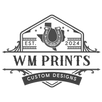The construction industry is currently undergoing a transformative shift with the advent of 3D printing technology. This innovative approach is not only revolutionizing how we build but is also reshaping our city skylines, offering unprecedented design possibilities and efficiencies. Let's delve into how 3D printing is changing the construction landscape while paving the way for the future of urban development.
The Rise of 3D Printing in Construction
3D printing, also known as additive manufacturing, allows for the precise layering of materials to create structures directly from digital models. In construction, this translates to the ability to produce complex and customized building components with exceptional accuracy and minimal waste. As cities continue to expand vertically, 3D printing provides a unique solution to the challenges posed by traditional construction methods.
Efficiency and Sustainability
One of the primary advantages of 3D printing in construction is its potential to enhance efficiency. Traditional construction methods often involve significant material waste and long build times. However, with 3D printing, construction waste is drastically reduced, and projects can be completed much faster. This not only saves time and resources but also contributes to sustainability goals by minimizing the carbon footprint of construction projects.
Moreover, the materials used in 3D printing, such as special concrete mixes, are designed to offer superior strength and durability, ensuring that structures are built to last. This means that the buildings of tomorrow can be more sustainable from both an environmental and economic perspective.
Redefining Architectural Design
3D printing empowers architects to explore designs that were once constrained by the limitations of traditional construction techniques. Complex geometries, intricate facades, and bespoke architectural elements that were previously cost-prohibitive or impossible to fabricate can now be realized with relative ease. This opens the door to a new era of architectural creativity, where the only limit is the designer's imagination.
By embracing 3D printing technology, architects can focus more on innovative design and less on logistical constraints, leading to skylines adorned with eye-catching and unique structures.
The Future of Urban Development
As 3D printing technology continues to evolve, it promises to revolutionize urban development. The ability to rapidly construct buildings and infrastructure means that cities can grow and adapt more quickly to the needs of their populations. Also, the reduced material usage and waste associated with 3D printing align with the ongoing push towards greener, more sustainable urban environments.
In this era of smart technology and evolving urban landscapes, 3D printing stands out as a key driver of change, offering solutions that are not only practical but also visionary.
For more insights into the innovative use of 3D printing and other fascinating topics, visit WM Prints.
Explore Related Products
To further enhance your understanding and application of 3D printing technology, explore some of WM Prints' specialized products like the Lyman Type prep tools holder. This product showcases the practical applications of precision and customization made possible by 3D printing.
3D printing is undoubtedly set to redefine our approach to construction, offering unprecedented opportunities for innovation and sustainability. As the technology continues to advance, we can expect even greater transformations in the way we design and build, ultimately reshaping our world’s skylines.
For more information and exciting 3D printing developments, be sure to check out the range of offerings at WM Prints.





